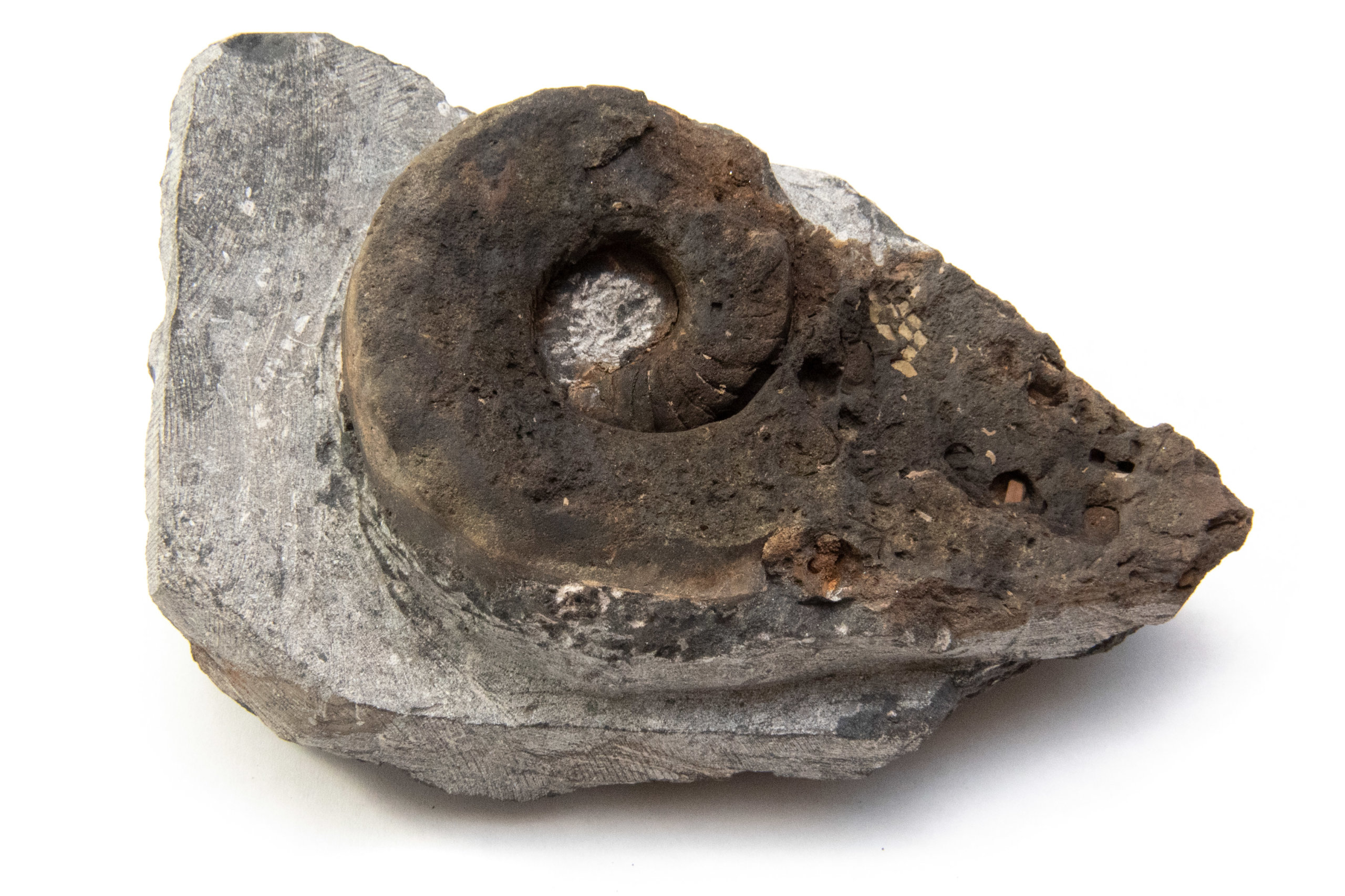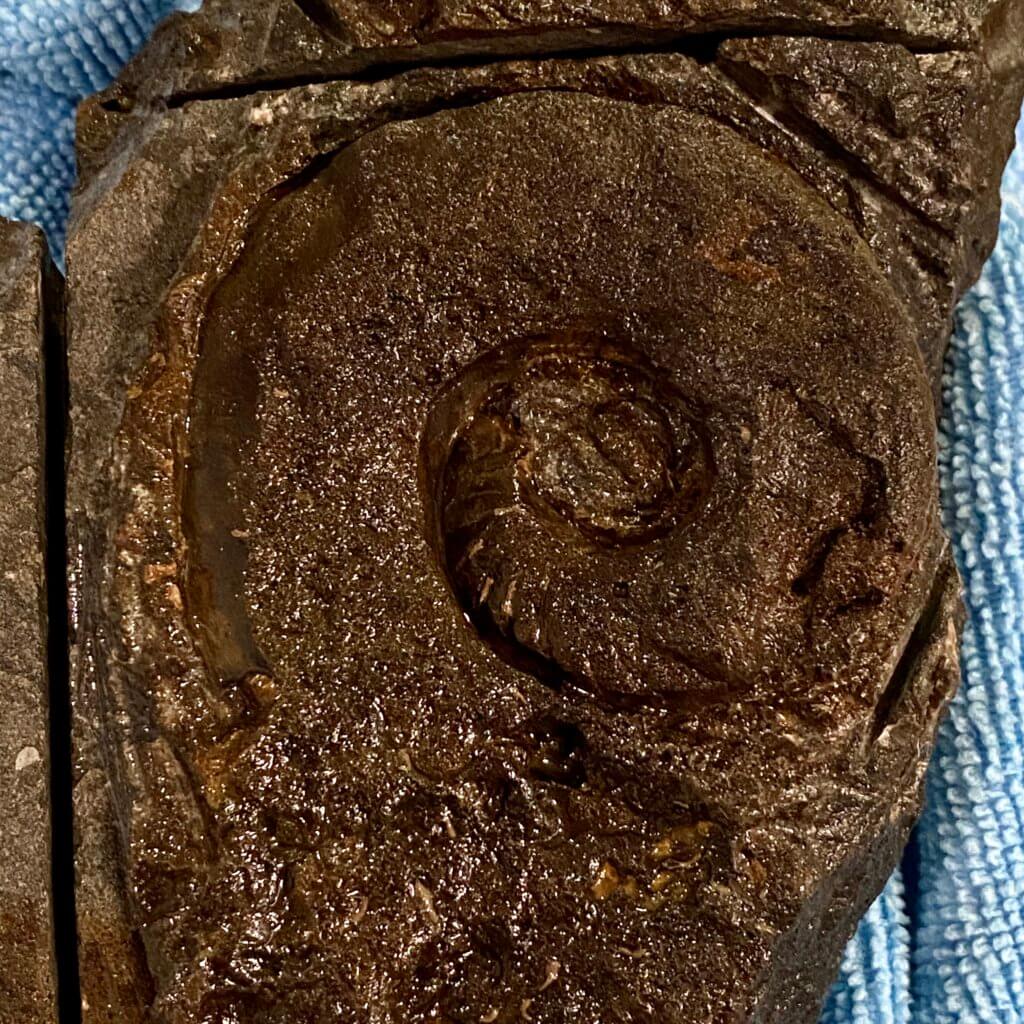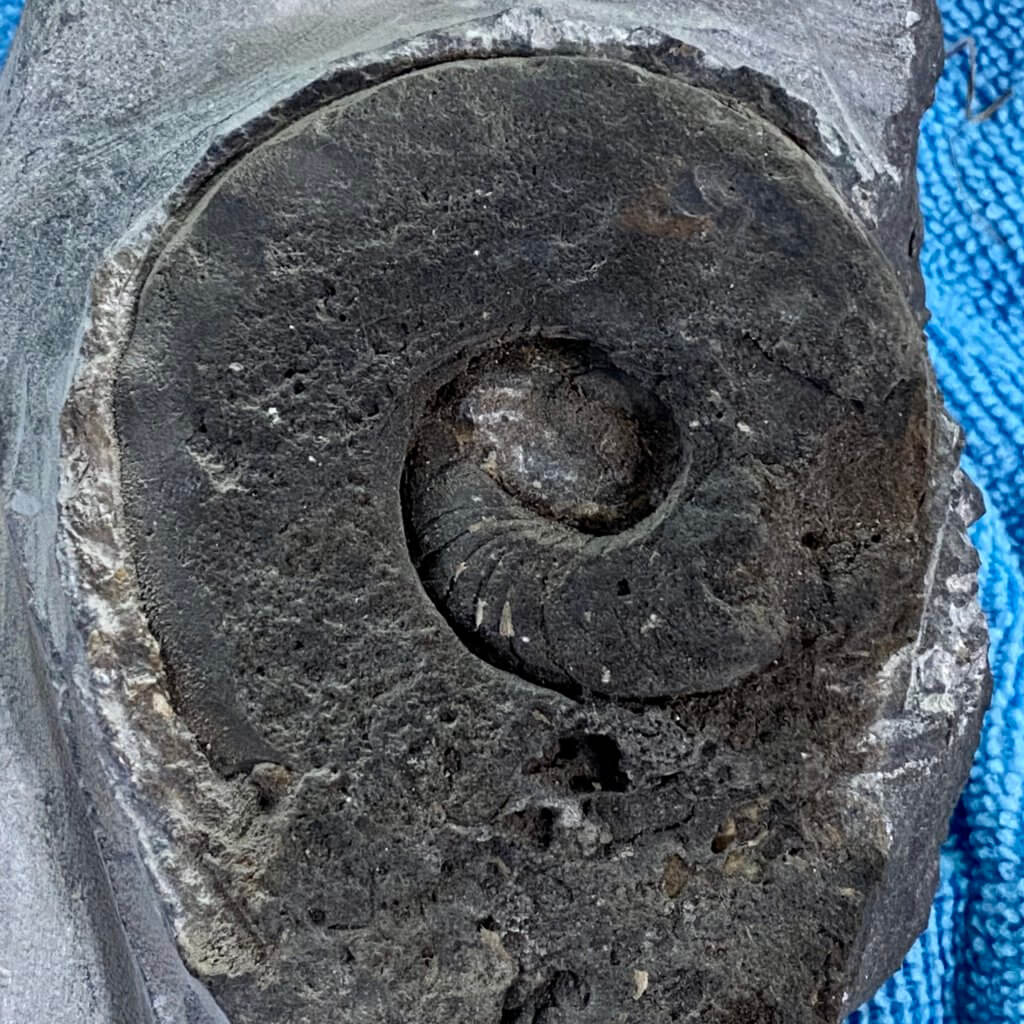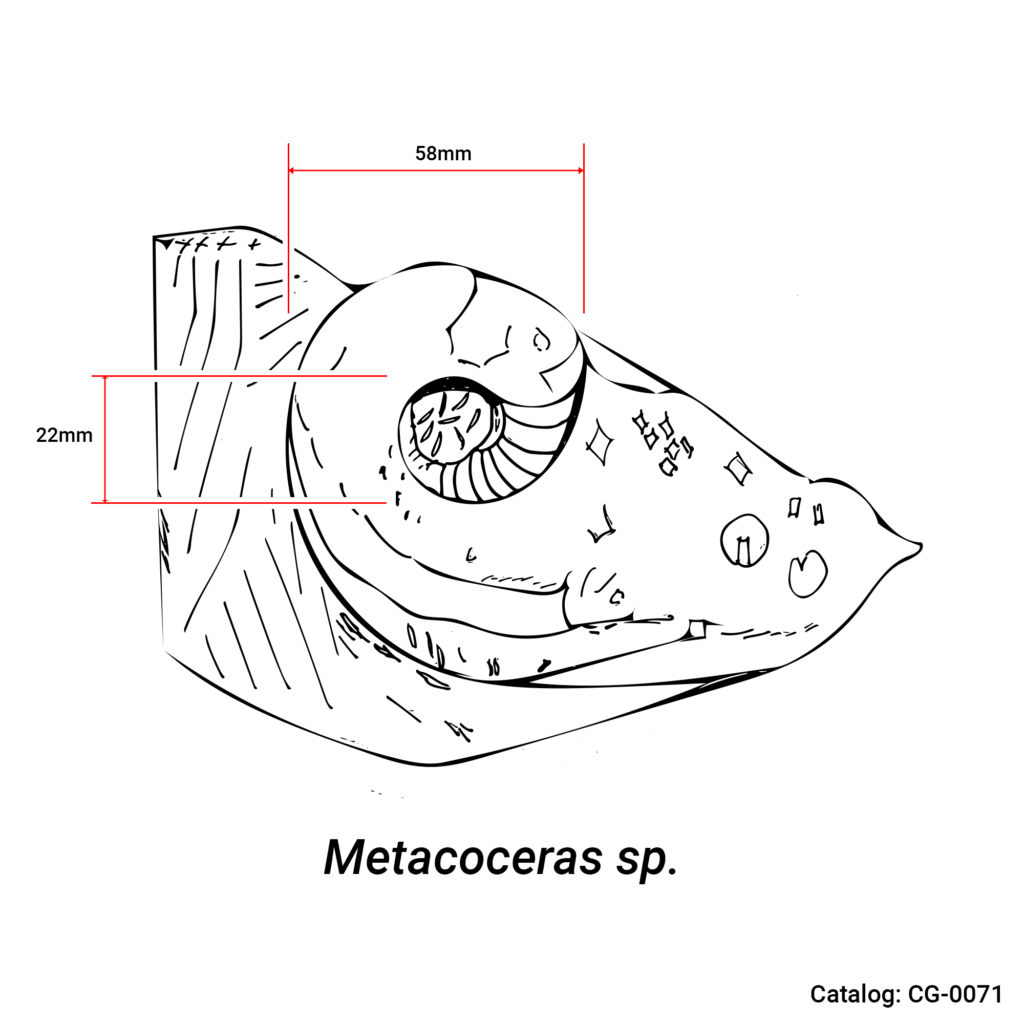Catalog Number: CG-0071
Largely complete, this specimen of Metacoceras, a Paleozoic Cephalopod, was found in a local stream. Facedown in the water, the limestone surface had been eroded by moving water for a period of time. The familiar conch shape of the genus Metacoceras was immediately recognizable. I used a small sledgehammer to successfully remove it from a much larger rock.
I call this complete, but it’s mostly a steinkern. A steinkern is the internal mold of a fossil creature. On top of what you see, there was also a fossilized shell at some point. This was eroded away by water. In the photo below, you can see a sharp line outlining the specimen. This is where the shell used to be. There are actually complete specimens in existence, they are without a doubt the rarest example of this genus.
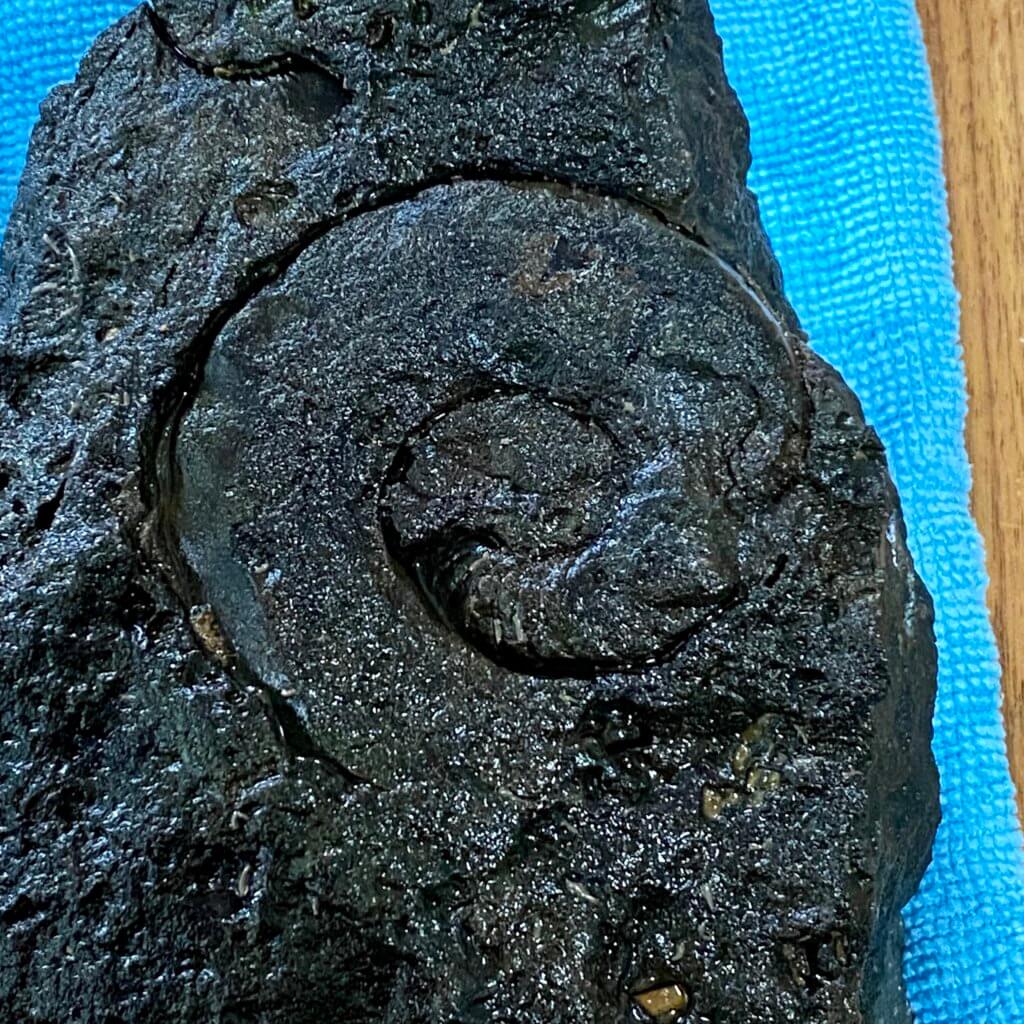
Discovery and specimen prep work
Upon returning home with the specimen, I immediately washed it and started to remove the outside matrix. As it was underwater, a number of living organisms were using its structure as a place to live. There were brown marks along with the septal wall chambers on the inside, which turned out to be small living chambers made of mud and sand for some creature that lived in the stream. I cleaned these out under a microscope.
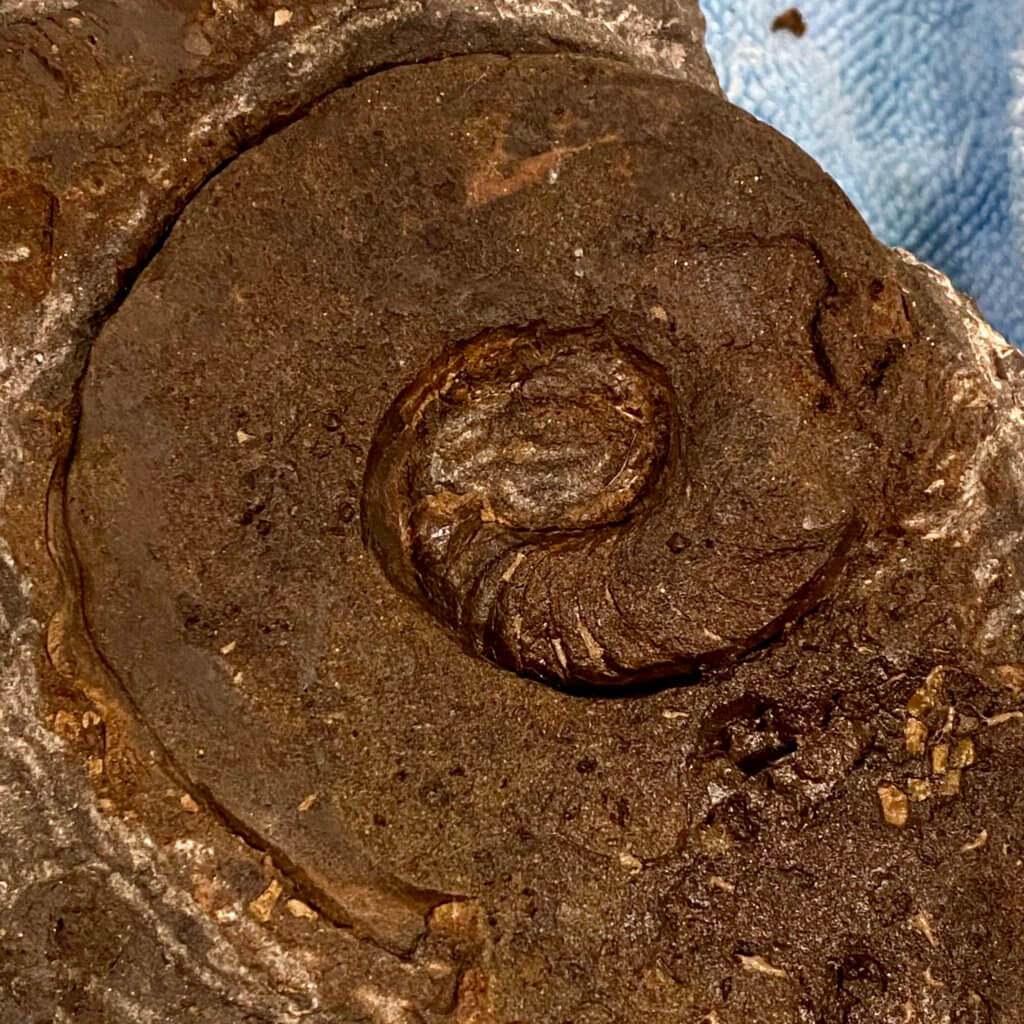
After light removal of the matrix using an air-scribe, I then moved to use a right-angle grinder with a diamond cutting wheel. There was a second specimen close to the edge. I used the grinder to separate it from the primary specimen. After making scoring marks and using the wheel to lower the surrounding matrix, I took a break from working on it.
I was also able to clean out some of the matrix in the umbilical area, which is also intact. I did not want to remove too much and risk damaging the area. The overall goal is to go over the specimen once more with the air-scribe near the edges and do the rest by hand. The face is somewhat fragile and I am avoiding contact with it while working. The body chamber does not have well-defined edges, so I’m a bit concerned with making a decision on how to shape it.
Umbilical Area
This photo shows a different specimen, CG-0021, where the impressed area is clearly shown. This is where the inner whorls rest within the larger whorls as the creature grows.
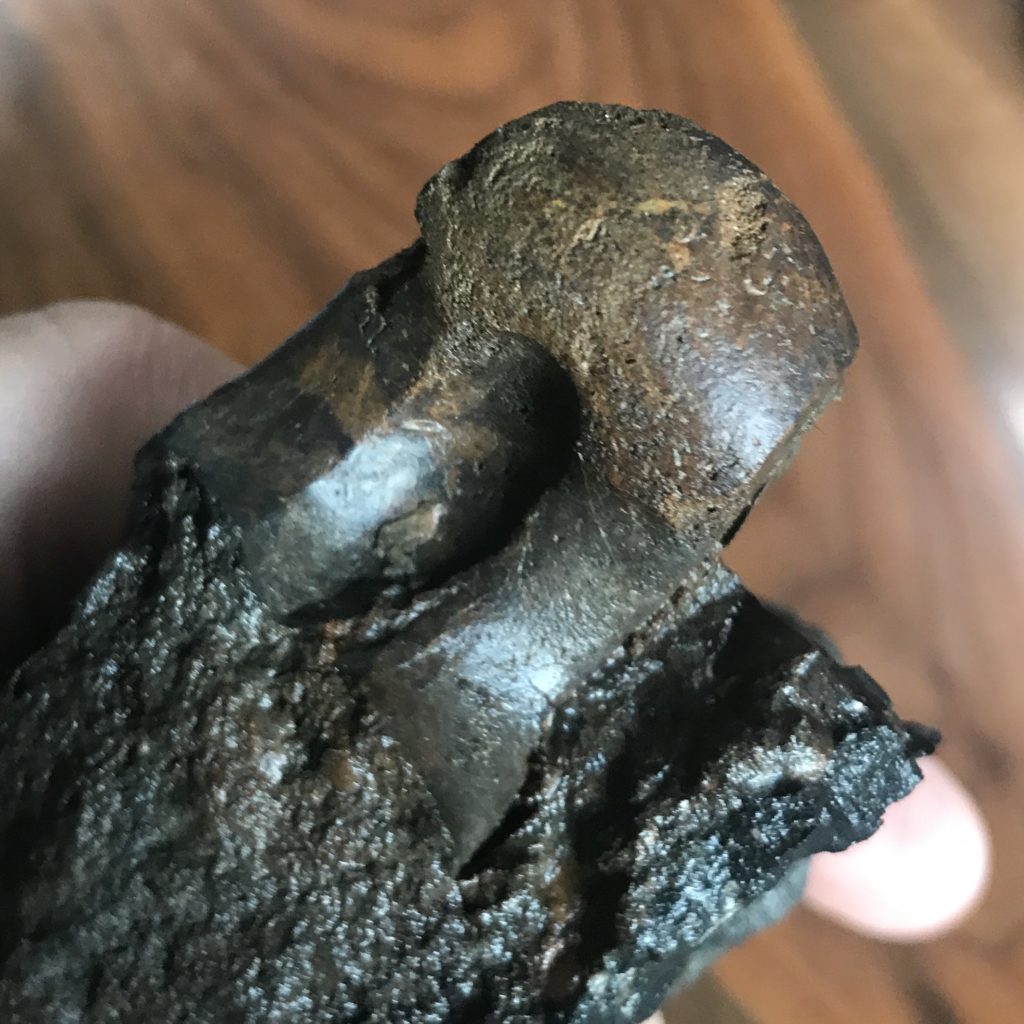
Finished specimen
After further removal of matrix around the edge and more grinding using a grinder wheel, I got the Metacoceras specimen to a good place. I may do more work on this in the future, but for now, this is the final work.
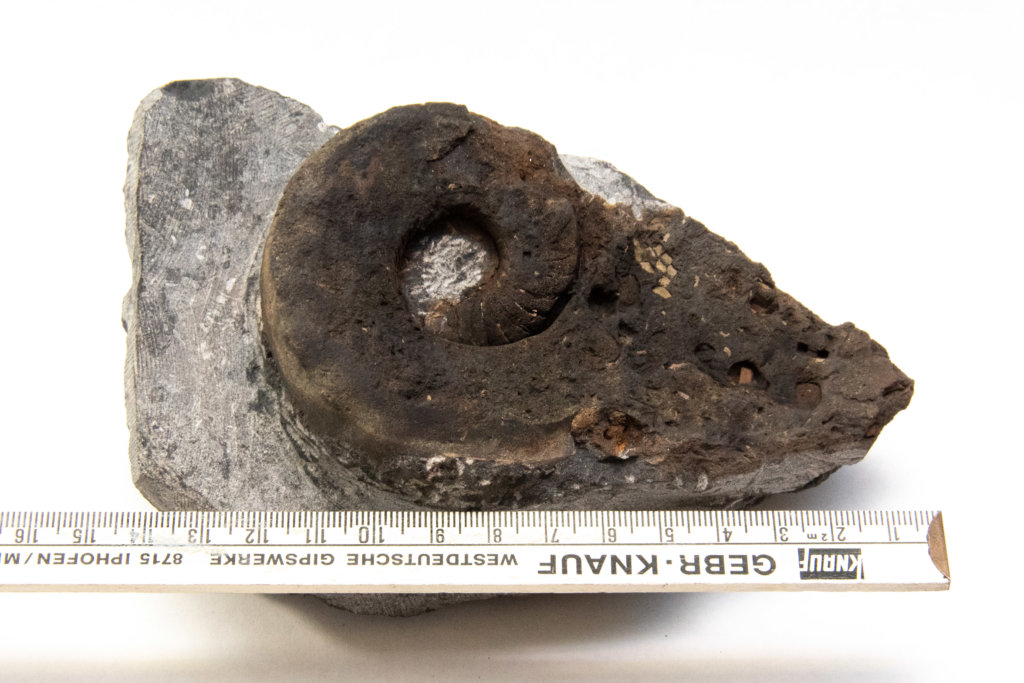

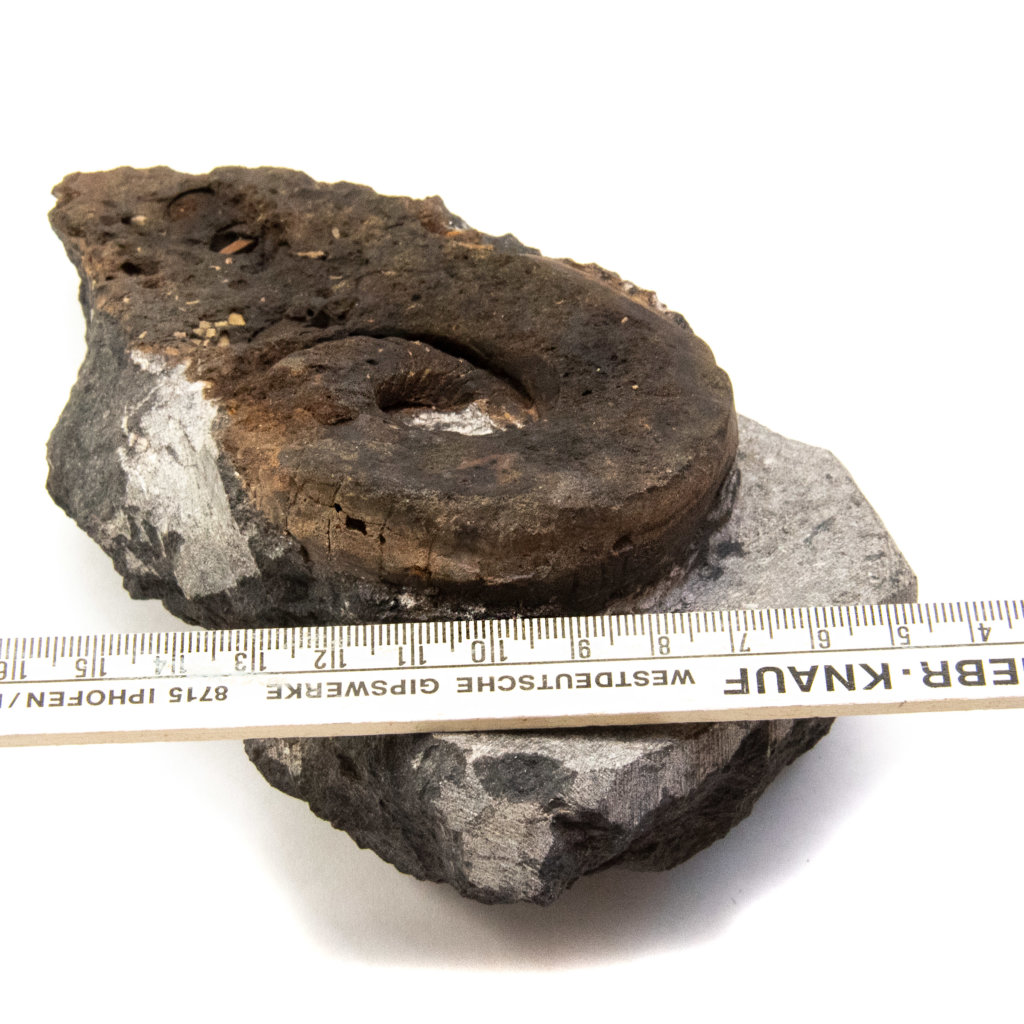
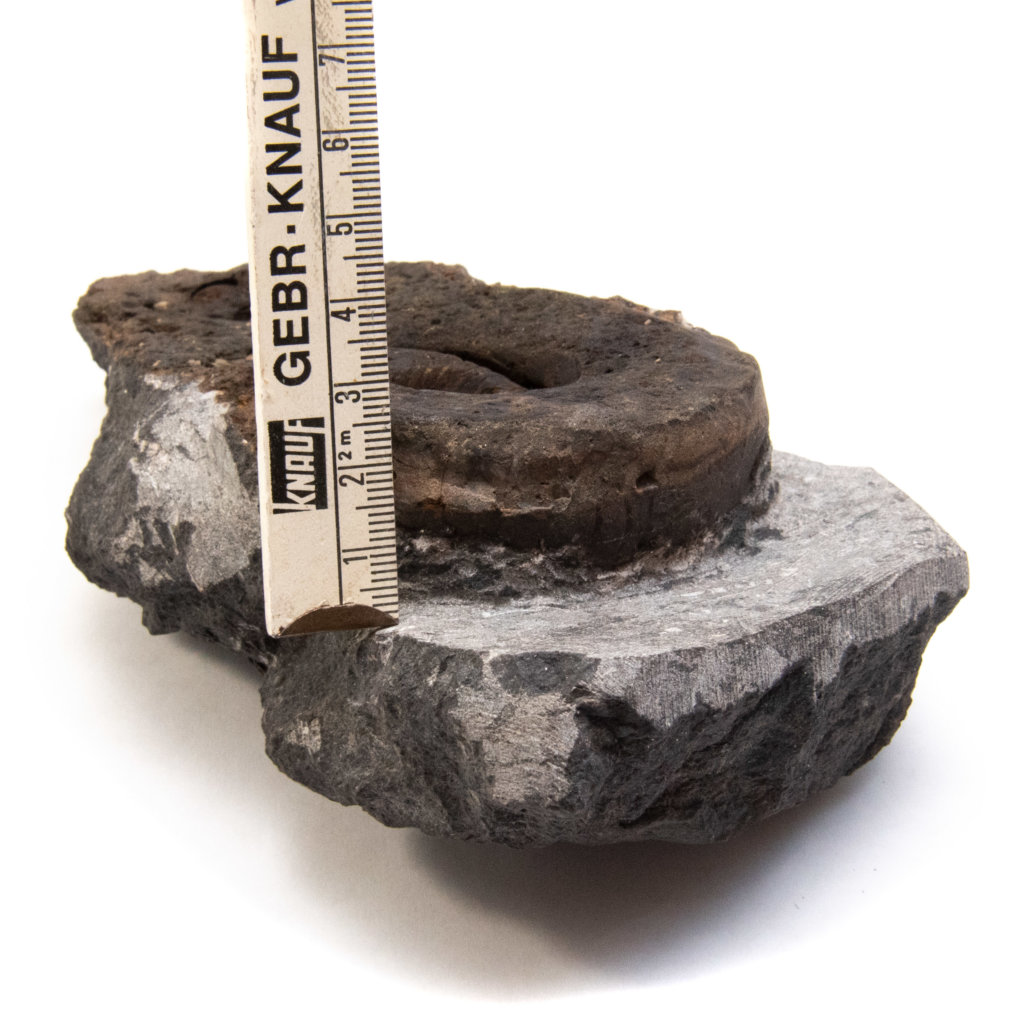
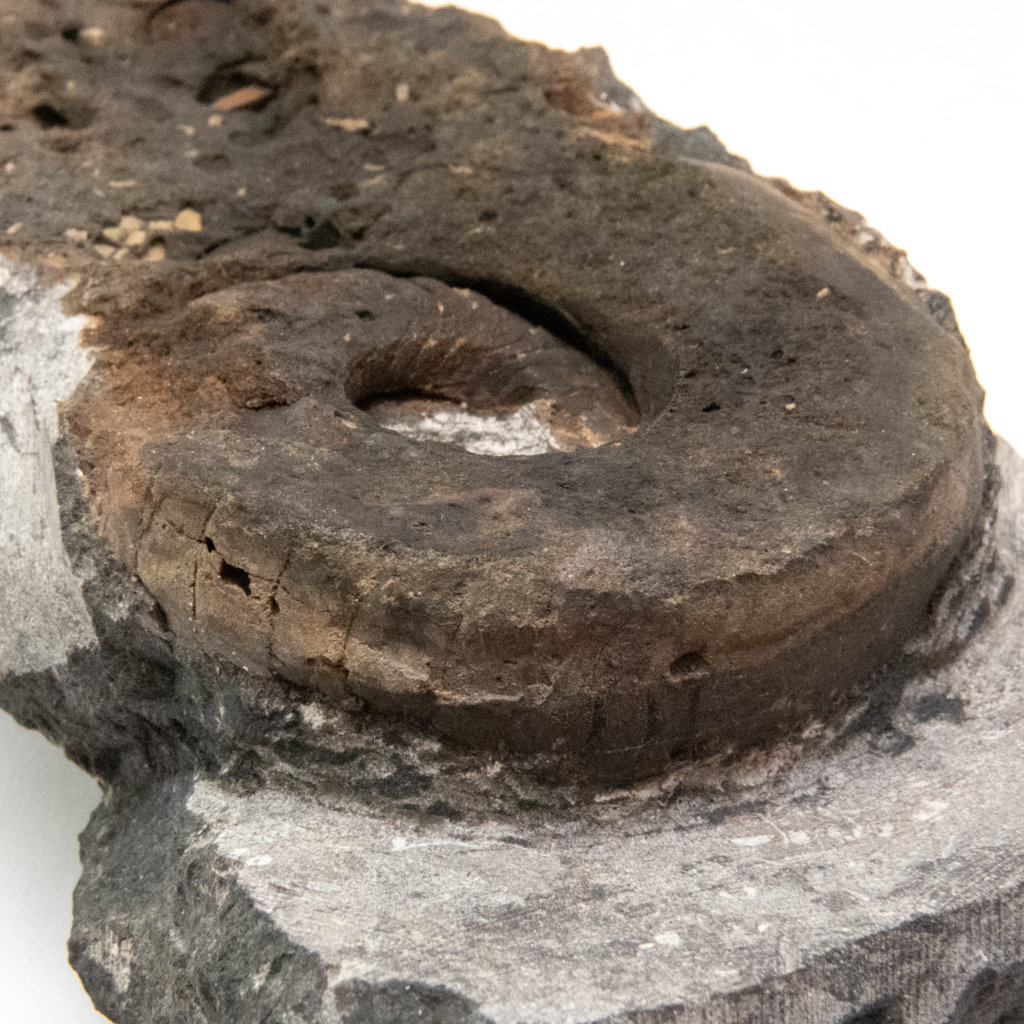

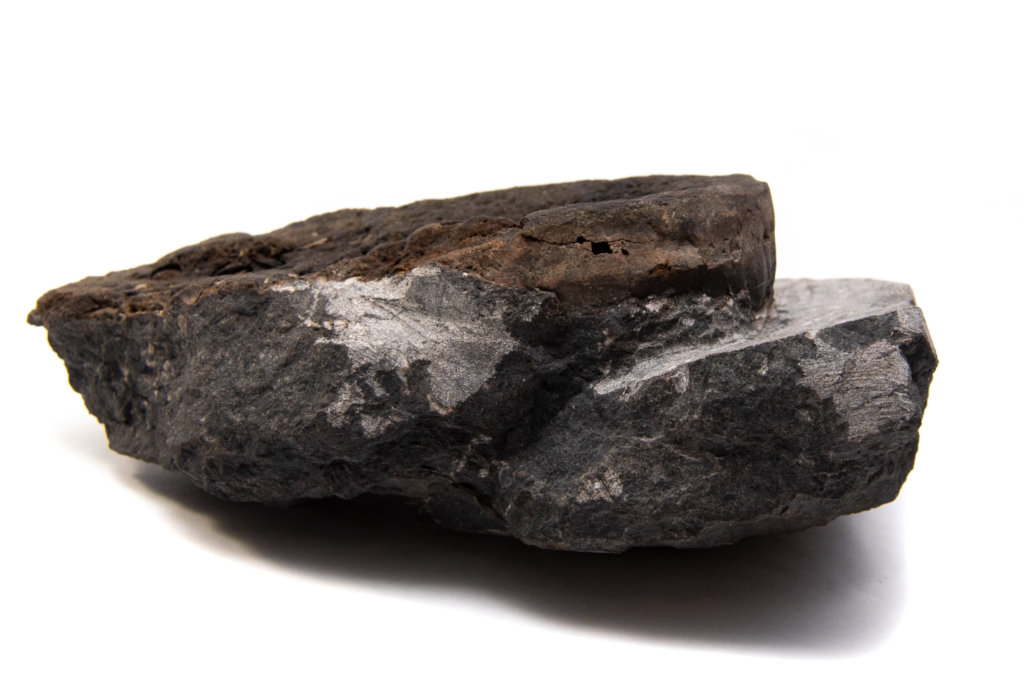

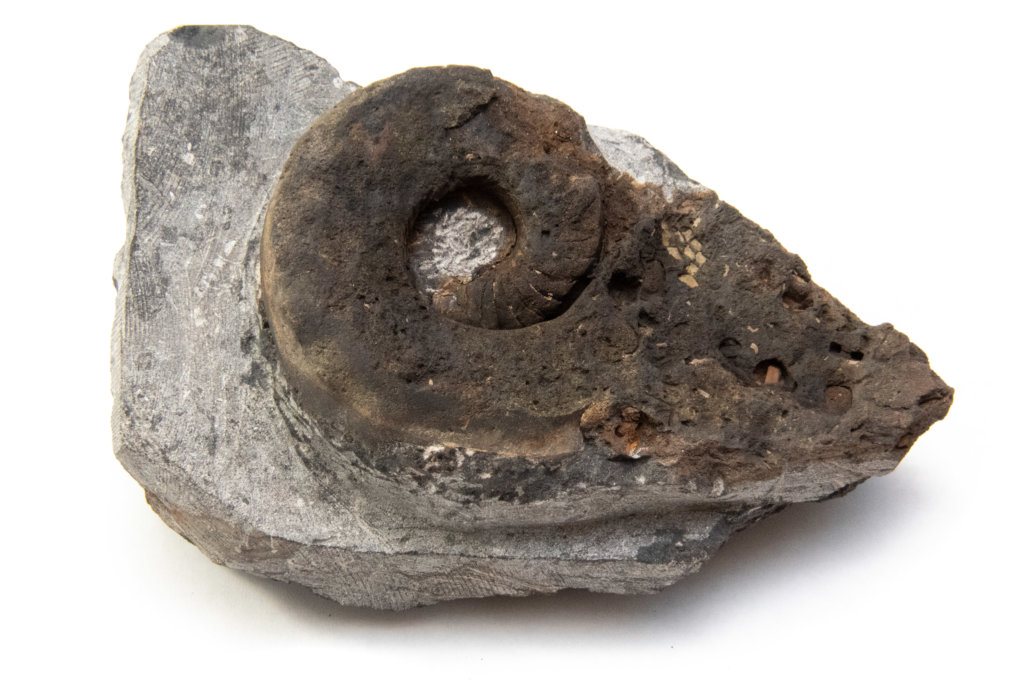
Specimen Dimensions
Metacoceras Specimens
| CG-0004 | Metacoceras I |
| CG-0005 | Metacoceras II |
| CG-0021 | Metacoceras III |
| CG-0024 | Metacoceras IV |
| CG-0037 | Metacoceras V |
| CG-0042 | Metacoceras VI |
| CG-0065 | |
| CG-0071 | A Complete Metacoceras |
| CG-0075 | Metacoceras Group |
| CG-0076 | “ |
| CG-0077 | “ |
| CG-0078 | “ |
| CG-0079 | “ |
| CG-0080 | “ |
| CG-0082 | Polished 1/2 whorl |
| CG-0083 | Cut specimen |
| CG-0092 | Metacoceras Specimen |
| CG-0122 | |
| CG-0123 | |
| CG-0124 | |
| CG-0125 |
Our Metacoceras Research
- Research Page – Metacoceras
Metacoceras on the Web
- KUMIP 38631 – Pennsylvanian Atlas of Ancient Life: American Midcontinent

